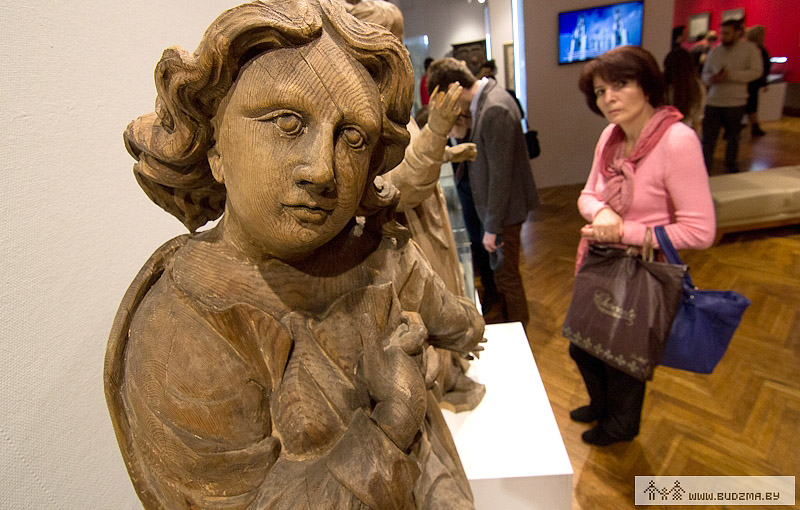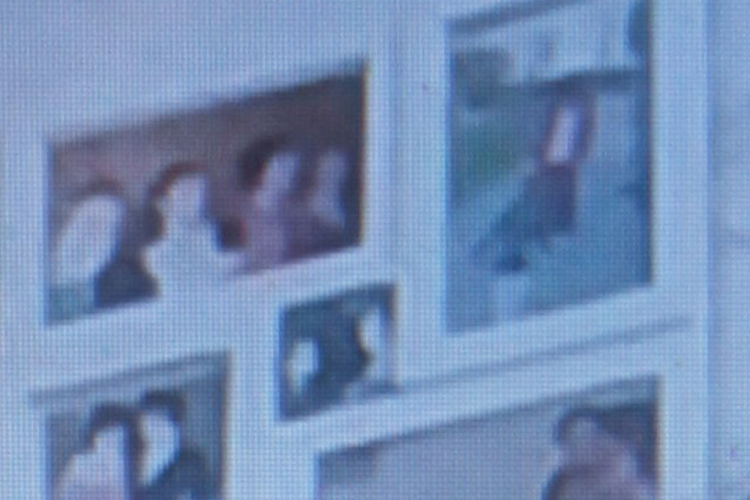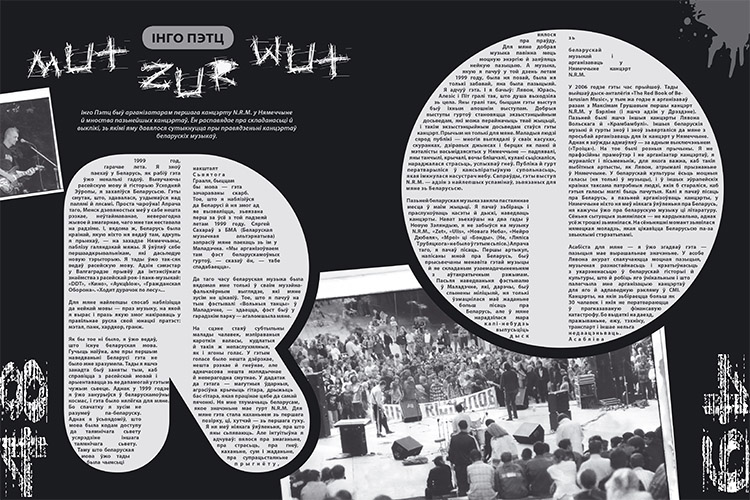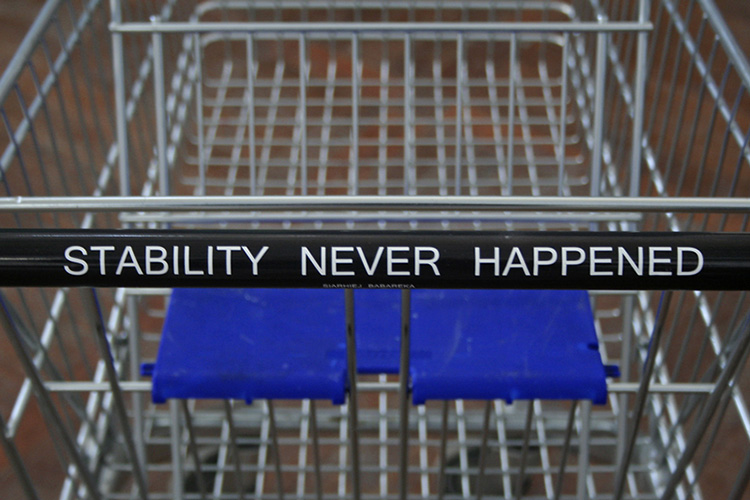
Аўтар: Taciana Arcimović, 25/04/2014 | ART Cult Aktivist project
PROCRUSTEAN BED OF BELARUSIAN ART: 10 CENTURIES?
The exhibition «Ten Centuries of Art in Belarus», which opened at the National Art Museum in March, was immediately named as «unique» by critics, visitors and mass media. 500 exhibits from several museums and private Belarusian collections, multimedia equipment, explication, audio-guides, a catalogue in three languages, hundreds of visitors every day – no Belarusian museum has ever had experience of hosting such a major project.
Nevertheless, despite all the advantages, the importance of such a project in the country’s culture and its historical role, what can such a form of presentation warn us about?
What things already dealing with our present days does it speak about? What is it that we are losing now and in what way are we becoming witnesses of the history formation?
CREATING A COORDINATE SYSTEM
The ambitiousness of the project objectives is already encoded in its title – «Ten Centuries of Art in Belarus». Thus, not only the fact of the existence of Belarusian art as a phenomenon is stated, but the phenomenon is emphasized to possess a centuries-old history. For the Belarusians who are nowadays almost deprived of education in the sphere of culture since high school (due to the reform which resulted in the reduction of the humanities share in curriculum), and for our close and distant neighbors as well, this fact can seem a real discovery. By the way, the attention, surprise, and curiosity which accompany any thorough look given by the visitors to each exhibit (for example, while scrutinizing the Radziwił family’s map of the Grand Duchy of Lithuania where the current borders of the country are presented under the name of «Lithvaniae») are a good proof of that.
The appearance of such an ambitious project was neither random nor out of the blue. Over the last few years the process of an active return into the Belarusian culture of values and names forgotten or lost in different periods of time has been evolving. Both the activities of state institutions (namely, the organization of such exhibitions as «Słuck Belts», «Marc Chagall: Life and Love», «Belarusian Artists of the Paris School») and independent activists contributed to this process. This is especially true for the art of the late XX — early XXI century (Viciebsk festival «In-Formation», «Partisan’s Collections» albums, the cooperation of Gallery «Y» with the artists working abroad, a series of meetings with the Belarusian artists within the project «Towards a Modern Museum», a research project «Zero Radius. Art Ontology of the 00s», etc).
Thus, a certain coordinate system has been gradually formed, which outlines cultural achievements of different periods.
It is the appearance of such a consciously built system which, in my opinion, set the foundation for the emergence of «Ten Centuries of Art in Belarus». Potentially, such a project could have appeared even earlier: the major part of the exposition is formed from the exhibits of the collection of the National Art Museum (especially its historical part) that are commonly found in its stores. But probably there was not enough concept and confidence, so only now, after years of mental training (including that of the visitors themselves) and thanks to the financial support of the commercial organization (the main sponsor is «Belgazprombank» which made it possible for Belarus to enjoy, for example, the originals of Chagall’s, Soutine’s and our other world famous countrymen), the project has been made possible.
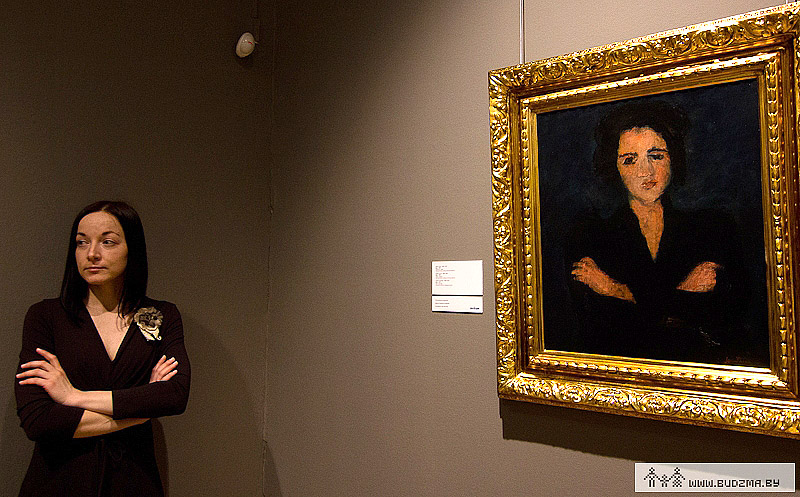
«Ten Centuries of Art in Belarus» exhibition
THE HISTORY WRITTEN BEFORE OUR EYES
In the first place, each art project is a subjective statement, one of the possible constructs on a particular topic. (Ideally, dozens of projects representing various institutions should appear covering one and the same topic; however in Belarus this tendency is still quite rare). A striking example of such a subjective statement is «Zero Radius. Art Ontology of the 00s. Minsk» which presented an attempt to explore the artistic life of Minsk during the 2000s. The final exposition included the works of only 15 artists who, according to experts, became iconic for the given period. It is clear that Minsk artistic circle of the 00s comprised a bigger number of names (Volha Sazykina, Tamara Sakałova, Siarhiej Babareka, Aleś Puškin, Kanstancin Sielichanaŭ, Ihar Cišyn and others). At that time one of the accusations directed at the curators was the subjectivity of the choices made.
Nevertheless, in the framework of such a local project as a «Zero Radius», realized by a group of independent activists, such a construct is quite natural.
What is meant is that as curators they had the absolute right to select and take a final decision actually aiming at making this project the first step for further work with the given topic. They had repeatedly stated this intention encouraging other activists to propose their own visions of «the 00s art». Unfortunately, until now no alternative option has appeared, but this is not a problem of the «Zero Radius».
In case of the exhibition «Ten Centuries of Art in Belarus» the situation is totally different. The project was organized by the biggest and most powerful state art institution and does not only propose one of the possible constructs of the history of Belarusian art. It actually creates a text-book of such a history. And whereas within the same local project of «Zero Radius» there was an attempt to form an expert group in order to move as closely as possible towards objectivity (for example, researchers from various institutions were invited), in case of the National Art Museum project we are unlikely to speak about a genuine desire to cooperate with different expert groups, including the independent ones.
That is why, with the exposition of the art of the first half of the ХХ century raising no questions (although, I do believe that one day we might learn a lot of new facts about the 1920s—1930s), the final part devoted to the second half of the ХХ — the beginning of the ХХІ century draws to the conclusion that the history does not give the Belarusians any lesson. For instance, about 20 years ago it was better not to mention the connection of Chagall, Soutine and other world famous authors who come from Belarus to Belarusian culture. It is a known fact that Chagall himself proposed Vitebsk his own works under the condition of founding his museum, but the city refused. And it is because of this until recently there has been not a single personal work by Chagall in Belarus (except small-size graphic works).
So, doesn’t this remind us what is happening now with the modern Belarusian art and what is evident from the final part of the exhibition, showing that the same story is repeated every few decades?

VARIETY OF ART SCHOOLS AS A RESULT OF EMIGRATION?
Associations between historical facts and present times already arise when you get acquainted with the section devoted to art schools of the XIX-XX centuries. At that period the historical context for autonomous Belarus was favorable: in fact, by the end of XIX century almost all educational and cultural institutions in Belarusian cities were closed with Moscow and St. Petersburg becoming the centers of artistic life (the Vilnius University was closed already in 1832). «Since the 1880s obsolete conservative level of academic education the Academy of Arts in St.Petersburg was providing ceased to meet the needs of the young artists from Belarus» (From the explication to the section “Art School at the turn of the XIX-XX centuries”). They started choosing other ways of getting art education. So, this is how the phenomena of Vitebsk, Minsk, Munich and Vilnius schools appeared with the apotheosis of the School of Paris, which is referred to as alma mater of Marc Chagall, Chaim Soutine, Michael Kikoine, Pinchus Kremegne and others. (By the way it seems a curious fact that St. Petersburg Art Academy graduates were invited to open schools in Belarus; basically local education was seen as only one of the first steps, there were many students who after competing their training in Belarus continued their artistic quests in Paris, Vilnius or Moscow).
The phenomenon of artistic emigration still remains topical. On the one hand, on the whole it seems to be rather natural for the artists: all around the world nowadays we speak about the mobility of artists as one of the necessary components. But, on the other hand, if we talk about the Belarusian context, here it is most likely to happen rather forcibly,
many authors have to immigrate searching for education, professional development and self-realization.
Аndrei Dureika (an artist who was expelled from the Art Academy in 1992 for taking part in the exhibition «The Lessons of Unkind Art», moved to Germany where he graduated from the Düsseldorf Arts Academy; at the moment he lives there for many years working with the issue of the Belarussian art abroad), while analyzing this issue, notes that there has been no shift of paradigms in approaching art and art education in Belarus after the fall of the Berlin wall. «It should be mentioned that in art institutions repressive methods had been used long before the appearance of such an institution as the president. It is worth recalling the episode of Aleh Chadyka’s dismissal (Aleh Chadyka taught architecture and the basis of composition at the Belarusian State Theatre and Art Institute, he was forced to leave his teaching position under the pressure of the academic staff and due to the denunciations received from students), whose educational system contributed to the emergence of a number of young lecturers who thought manipulating open categories and practiced modern methods of teaching. It is those “academicians” who we owe such a glorious definitions of modernist-minded students as “foreign” and “zombies” who until 1990 not only filled the college and Parnat, but were also referred to as “Jewish art” (as teachers of the Belarusian Academy of Arts named abstract art) in all the courses of the higher education establishment.
In 1991–1993 dozens of students were expelled from the Academy of Art and art schools, and those were not single cases — it was a classic cleansing» [1].

Exposition of the «Zero Radius. Art Ontology of the 00s. Minsk»
Starting from the 1990s Andrej Zadoryn, Natałla Załoznaja, Raman Zasłonaŭ, Ihar Kaškurevič, Alena Kitajeva, Ihar Cišyn left the country. The young generation, or «zombies», as they are called in the country, went abroad to get education. Аndrei Dureika cites a list of foreign art schools which played an important role in the development of the Belarusian authors: Cologne, Frankfurt am Main, Berlin, Amsterdam, Paris, Poznan, Warsaw, New York, Vienna, Ghent and others.
He generally compares the Dusseldorf Arts Academy of the 1992-2010s with the «Paris hive».
This is where he graduated from, as well as Maksim Tymińko, Hanna Sakałova, Andrej Łohinaŭ, Žanna Hrak, Jahor Hałuza, Zoja Łucevič and many other artists from Belarus. Nowadays they are already mature artists who are actively working and exhibiting their works all around the world, getting recognition of local institutes and not only those of art. For instance, last year Hanna Sakałova was awarded Förderpreis für Bildende Kunst der Landeshauptstadt Düsseldorf. This is a special prize conferred by the Düsseldorf municipality to the artists who present special importance, namely for the local areas. Foreign artists rarely get this award, but besides Hanna in 2005 one more Belarusion received it — Alaksiej Kaškaroŭ.
Should it be noted that the works of these artists can be seen neither within the project «Ten Centuries of Art in Belarus» nor in any country’s museum (apart from independent art spaces)? Such a phenomenon as the Belarussian art of emigration at the turn of the XX-XXI centuries is generally absent from the official historic and artistic discourse.
That is, you have to wait for a hundred years for some Belarusian private company to acquire at one of the auctions and return to Belarus those things which are nowadays called «strange» and «unnecessary»?
FOREVER STRANGE?
Questions of this kind arise when analyzing the final part of the exhibition — «Postmodernism». In general, the section under this title looks somewhat controversial. If to analyze the works presented there, it seems that the need to turn to the concept of «postmodernism», which is now internationally used rather cautiously, emerged from a certain state of loss: here one can come across actually everything that failed to fit into the framework of realism in its traditional Soviet understanding and a so-called «historical romanticism» (the name of the previous section, which includes modern Belarusian painters who represent official art and whose work is totally devoid of any critical look).
If we start from the concept of the project, the purpose of the «Postmodernism» section is supposed to be a demonstration of the transformation and diversity the Belarussian art has arrived to accumulate so far. As a result, the works selected and presented at the exhibition, despite the chronological boundaries, rather cover the topic of Belarusian modernism. They reveal how contemporary authors got engaged in a dialogue with the coryphaei of modernism or with the predecessors whose names had been long forgotten during the Soviet era (for numerous Belarusian authors it is Vitebsk and Paris schools which became at one time sources of inspiration). Thus, the works «Cold Picturesque Object» by Alaksandr Malej or «That of Vitebsk» by Vasil Vasiljeŭ are seen as accurate dedications to the constructivists, whereas «A Bit of Yellow» by Rusłan Vaškievič is a replica on Cezanne’s still lifes. The apotheosis of the dedication to the contemporary art is, of course, the eggs by Uładzimir Cesler and Siarhiej Vojčanka (the century’s project «Twenty from XX»).
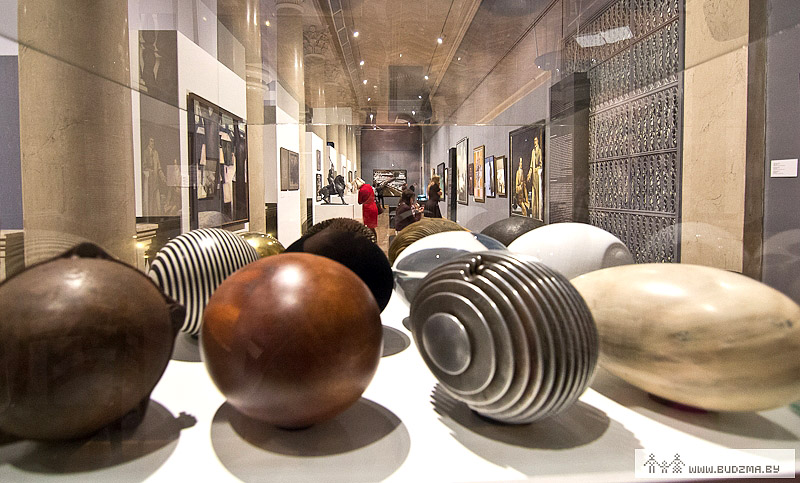
Uładzimir Cesler and Siarhiej Vojčanka Twenty from XX project
Thus, in the final part of the project of the history of Belarusian art such important processes which began in the 1980s, exploded in the 00s and led to the emergence of a number of artists of different generations have not been presented at all. Among these artists are Ihar Cišyn, Natałla Załoznaja, Artur Klinaŭ, Siarhiej Kiruščanka, Alaksiej Łunioŭ, Antanina Słabodčykava, Michaił Hulin, Siarhiej Šabochin, Alaksandr Niekraševič and others, who work in various genres (Pop Art, Op Art, Conceptualism, object art, kitsch, etc.), in various dimensions (political, social, gender) and reasonably fit into the context of contemporary art. Moreover, the Belarusian photography is not presented at all, despite the place it takes in the international art context. It means that so far these authors, just like in the Soviet period, remain «outsiders», «strangers» in the official history of Belarusian art and partly reach self-realization abroad.
What is the reason for this permanent ignoring of authors who are seen as strange and different? Why, on the one hand, some institutions do gradually turn to them (exhibitions at the Museum of Contemporary Art, including one of the latest projects — «Avant-gARTe. From the Square to the Object» ), while on the other hand, creating such an ambitious project as «Ten Centuries of Art in Belarus» they do not even recall about their existence since it all happened beyond these institutions’ will?
Why until now most of the works that comprise the heritage of our times have not found their place in the collections of state museums, and hence there is no guarantee that once they might leave the country and become the property of the museums of other countries?
It is clear that one exhibition is not able to cover the entire history of Belarusian art. Even for those 500 exhibits, which are now represented in the exhibition, there is obviously not enough space of half of the floor’s room. But if we stick to the fact that the concept of the project is to outline milestones, events in the Belarusian art, especially with regard to new pages of our history, in my opinion, ignoring already present phenomena is unacceptable, particularly nowadays. (In this respect the project «Avant-gARTe. From the Square to the Object» again looks as an attempt to indicate the place of such an art: aside from the official history (and still up to now — «avant-underground artists»).

Siarhiej Šabochin Practices of Subordination \ Minsk 2012
Otherwise, it is perceived as a continuation of the process of «cleansing», which began in the 1990s when the «academicians», those who were holding senior positions in the public cultural institutions, judging by their own tastes or due to personal ambitions decided who and what would be presented in the discourse of Belarusian art.
«People who hold administrative positions at the Artists Union and the Ministry of Culture for the most part are not some infernal villains; they are just people who knowingly participated in the work of the system, which distinguished itself with shameless and cruel injustice. People who live in the USSR the lives of the poor are not always those who lack education, commitment or whose lives are interfered with special circumstances, it is often people who do not want or cannot work for the suppression system, thus it has excluded them from its distribution system of life benefits.»
Andrew Solomon «The Irony Tower. Soviet Artists in a Time of Glasnost».
Taciana Arcimovič, translated by Volha Bubič
[1] Аndrei Dureika. SPACE_______BY // «Zero Radius. Art Ontology of the 00s». Minsk, 2013.
Opinions of authors do not always reflect the views of pARTisan. If you note any errors, please contact us right away.



